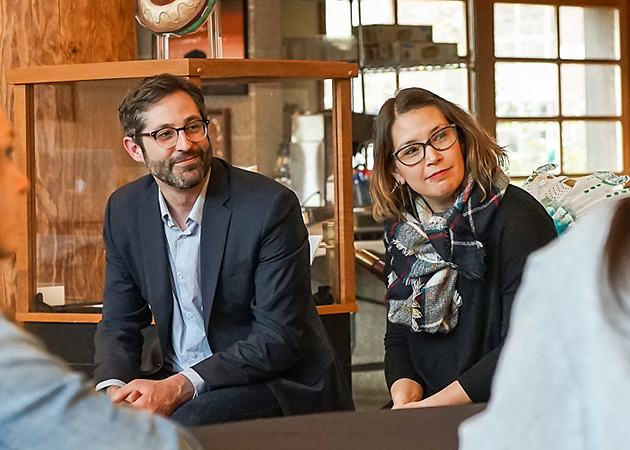SOLUTIONS AND INVESTIGATIVE JOURNALISM
Shane Hoffmann
Junior, journalism
Catalyst Journalism Project, Daily Emerald sports editor
Hometown: Ann Arbor, Michigan
Shane Hoffmann already had his hands full covering sports for the UO’s independent student-run newspaper, the Daily Emerald, when the pandemic hit. But when supply chains fell into disarray and food insecurity began to rise, he started seeing big problems everywhere—problems that needed solutions.
That’s when he discovered the Catalyst Journalism Project, which combines a reporting style known as solutions journalism with investigative journalism to find what’s working and spur community action. His first solutions story, on a Portland-based nonprofit that retooled its program to meet the dietary needs of indigenous communities, was published in the East Oregonian. Since then, he has written pieces for Eugene Weekly, the Oregonian, the Portland Tribune, and Ethos, a student-run magazine.
“My goal is to tell stories that are impactful, not just narratively, but in terms of magnifying problems or furthering discourse,” he said.
Although he’s still passionate about sports, Hoffmann is equally committed to exploring how innovative approaches such as solutions journalism can add depth and impact to his articles. Taking a data journalism class has also expanded his skills in a new direction.
“What the SOJC is doing to push this stuff ahead is great,” he said. “It’s all interconnected, and it has strengthened my writing as a whole—as it relates to sports, as well. I’ve definitely seen that pay off.”




Professor Peter Laufer gave his journalism students a 30-minute investigative reporting assignment to track down an elementary student involved in a mysterious pen-pal project in 1959. The students found the woman—and then kept digging. Multiple Freedom of Information Act requests, hours spent combing the archives and government files, a trip to Moscow, and two years later, the students published their findings with Anthem Press in Classroom 15: How the Hoover FBI Censored the Dreams of Innocent Fourth Graders.
Meet the Journalism Faculty

Nicole Dahmen

Brent Walth ’84

Seth Lewis

Ann Curry ’78
Broadcast Journalist
Host of TNT/TBS’s Chasing the Cure









